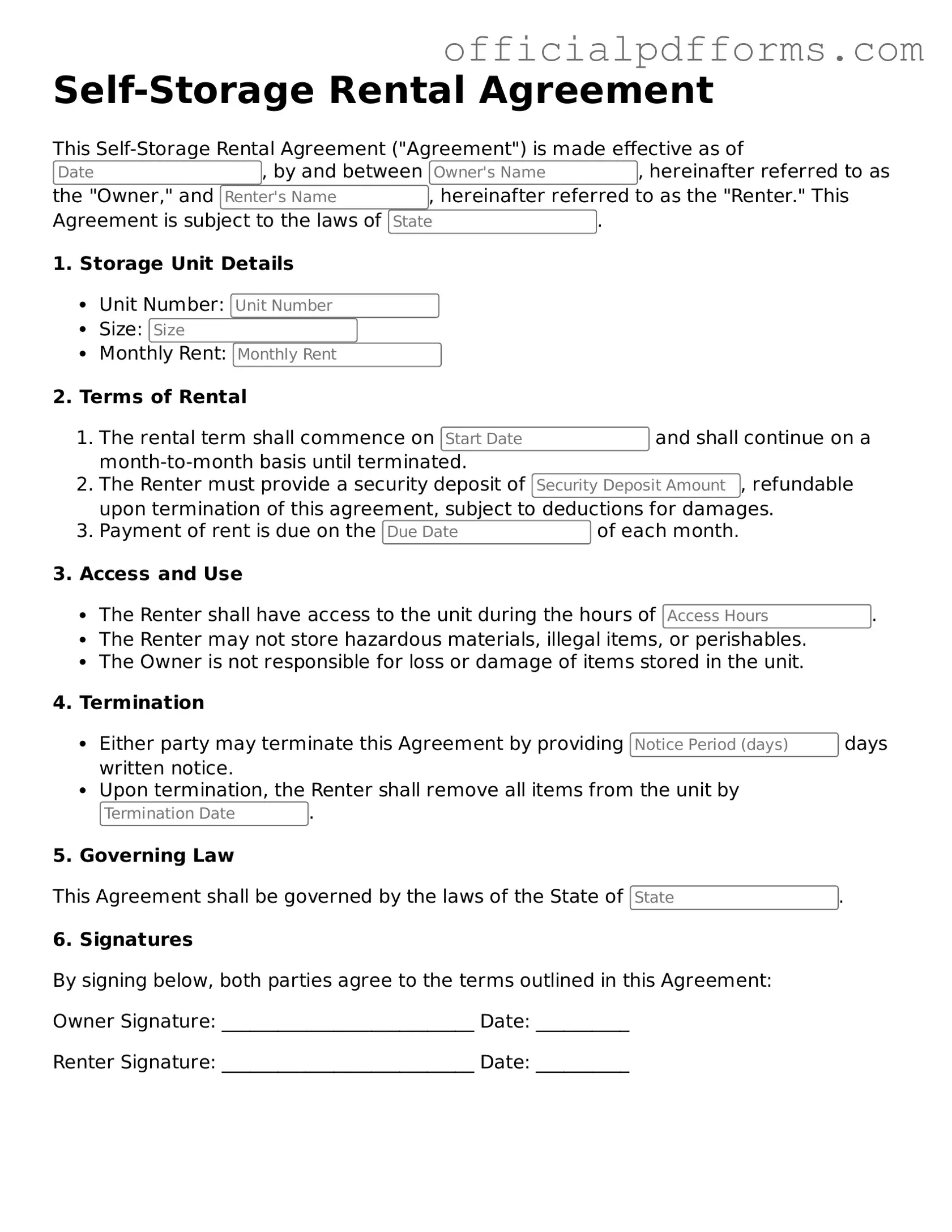What is a Self-Storage Rental Agreement?
A Self-Storage Rental Agreement is a legal document that outlines the terms and conditions between a storage facility and a customer renting storage space. This agreement typically includes details such as the rental period, payment terms, and the responsibilities of both parties. It serves to protect the rights of both the storage facility and the renter, ensuring clarity and understanding in the transaction.
What should I look for in a Self-Storage Rental Agreement?
When reviewing a Self-Storage Rental Agreement, consider the following key elements:
-
Rental Terms:
Check the duration of the rental and any options for renewal.
-
Payment Details:
Look for information on rental fees, payment due dates, and accepted payment methods.
-
Access Hours:
Understand when you can access your storage unit and any restrictions that may apply.
-
Insurance Requirements:
Some facilities may require renters to have insurance for their belongings. Be sure to clarify this.
-
Termination Clause:
Review the conditions under which either party can terminate the agreement.
Are there any fees associated with the rental agreement?
Yes, there may be several fees associated with a Self-Storage Rental Agreement. Common fees include:
-
Monthly Rental Fee:
The primary cost for renting the unit.
-
Security Deposit:
Often required upfront, this fee is typically refundable at the end of the rental period if the unit is returned in good condition.
-
Late Fees:
If payments are not made on time, additional charges may apply.
-
Administrative Fees:
Some facilities charge a one-time fee for processing the rental agreement.
Can I access my storage unit at any time?
Access to your storage unit may vary depending on the facility's policies. Many storage facilities offer access during specific hours, while others provide 24/7 access. It is important to review the access hours outlined in your rental agreement to ensure they meet your needs.
What happens if I miss a payment?
If a payment is missed, the storage facility may impose late fees as specified in the rental agreement. Continued failure to pay can lead to further actions, such as a lien on your belongings or termination of the rental agreement. It is advisable to communicate with the facility if you anticipate difficulties in making a payment.
Is there a minimum rental period?
Many storage facilities have a minimum rental period, often ranging from one month to several months. This period is typically stated in the rental agreement. Understanding this term is crucial, as it affects your commitment and financial planning.
What should I do if I want to terminate the agreement early?
If you wish to terminate the rental agreement early, you must follow the procedures outlined in the document. This may involve providing written notice to the facility and ensuring that all payments are up to date. Some facilities may charge an early termination fee, so it's wise to review the terms carefully.
What is the process for moving out of my storage unit?
When moving out of your storage unit, follow these steps:
-
Notify the storage facility of your intention to vacate, following the notice period specified in your agreement.
-
Remove all belongings from the unit and ensure it is clean and free of damage.
-
Return any keys or access cards provided by the facility.
-
Request a final inspection if required, and inquire about the return of your security deposit.
By adhering to these steps, you can ensure a smooth transition when moving out of your storage unit.
